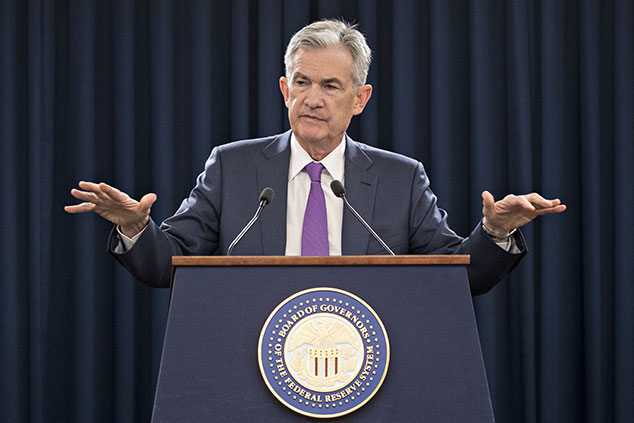
With the US Federal Reserve announcing another rate rise on Thursday evening, we seem to be leaving the zero-interest rate world of the last decade behind. But is this premature? Simon Fasdal, head of fixed income at Saxo Bank, has kindly agreed to share his thoughts with us.
The Federal Reserve is clearly worried about inflation
By itself, the Fed’s decision to raise rates by 0.25% to between 2% and 2.25% “is in line with expectations” says Fasdal. Much more important was the Fed’s accompanying statement, which “isn’t exactly dovish, as it thinks that growth will be strong even after the latest increase”.
This suggests that the Fed “is extremely concerned about higher inflation”. The Fed’s sympathies “clearly lie with those experts who think that the economy is running at full capacity, rather than those who think that there is still a degree of slack remaining”.
In contrast to the Fed’s desire to normalise interest rates, the European Central Bank (ECB) still thinks that the eurozone needs monetary stimulus – “they are not only keeping rates low, but continuing to run QE [quantitative easing]”. This is a mistake, says Fasdal – the ECB’s failure to raise rates will lead to an inflationary surge: “the longer Europe waits to normalise interest rates, the worse the impact will be when it does increase them”.
Emerging markets are heading for trouble
Emerging-market bonds are in a precarious position, too, thinks Fasdal. Not only will Fed rate rises make their relatively high yields less attractive, but there is also a chance that the US-China trade wars could hurt sentiment so much that investors divert their money into safe havens.
While it is possible to dismiss this summer’s dramatic decline in the value of the lira and Turkish bonds as the market overreacting to political risk, other currencies have also done badly. Taken together, these declines “aren’t a healthy cocktail” and could be a sign that the wider sector is in for a period of turbulence.
Corporate debt is a worry, too
Many experts are concerned that the extended period of low interest rates has made companies too complacent about taking on large amounts of debt. Although a supporter of current Fed policy, Fasdal agrees that this is a valid concern.
“There is definitely a risk that if the Fed moves too quickly, corporations could find themselves in the middle of a debt crunch with large numbers of bonds being subject to downgrades by the ratings agency” he says. As the Brian Eno song goes, “it is the dimming of the light that makes the picture clearer”.
Could technology be the answer – or make things worse?
The bond market has fundamentally changed over the last decade, says Fasdal – in both positive and negative ways.
Technology has improved the liquidity and tradability of bonds, allowing regional banks and asset managers to access the market directly, rather than relying on the big players to act as intermediaries. Developments in artificial intelligence are slowly doing away with the need for human traders entirely, as funds can place an order with a program which can execute trades overnight.
In theory, these changes should have boosted liquidity. But this has been offset by the fact that rules and regulations have restricted banks’ ability to temporarily hold assets on their balance sheets while they gradually offload them onto the market.
“In the past many investors were willing to take a longer term perspective”, says Fasdal, “which meant that they were willing to pick up assets when everyone else was selling”. Now, “everyone has similar horizons, so they end up all acting in the same way”. This has the potential to turn any panic into a rout.